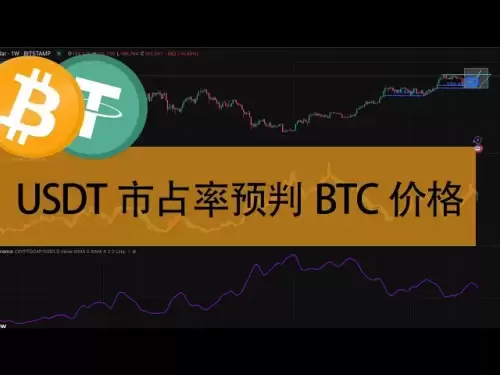 |
|
 |
|
 |
|
 |
|
 |
|
 |
|
 |
|
 |
|
 |
|
 |
|
 |
|
 |
|
 |
|
 |
|
 |
|
Cryptocurrency News Articles
Imagine you are an entrepreneur with a groundbreaking idea
May 17, 2025 at 09:45 pm
A few years ago, launching an Initial Coin Offering (ICO) seemed like a straightforward way to raise capital.

A few years ago, the concept of Initial Coin Offerings (ICOs) being regulated by the European Union might have seemed far-fetched. Back then, companies across the globe were launching ICOs, a type of cryptocurrency crowdfunding, to raise capital.
However, with the absence of clear regulations, the potential for scams and financial losses grew, especially as eager investors poured billions into these ventures.
Enter MiCA, an abbreviation for Markets in Crypto-Assets, the European Union’s regulation aiming to bring order to the wild west of ICOs.
Coming into effect in 2024, MiCA sets a regulatory framework for crypto-assets, intending to ensure that ICOs are conducted transparently and securely. But how does MiCA impact investors, startups, and the global crypto market?
Also Read: Best Crypto Scanners For Advanced Technical Analysis
The Structure of MiCA (Markets in Crypto-Assets) Regulations
The Markets in Crypto-Assets Regulation, or MiCA, is a new legal framework in the European Union designed to regulate the cryptocurrency and blockchain industry, including ICOs.
The goal of the regulation is to create a unified regulatory environment for crypto-assets in order to foster innovation while also protecting investors.
Since its partial implementation in 2024, MiCA has begun to reshape the European crypto landscape, bringing stability and trust to the table.
What is an ICO According to MiCA?
From the perspective of MiCA, an Initial Coin Offering (ICO) can be defined as the public sale of newly issued crypto-assets to investors in exchange for funds, which are typically stated as cryptocurrencies or fiat currency.
The regulation classifies ICOs into different categories based on the type of tokens being issued.
Types of ICOs Recognized by MiCA
According to the new legislation, there are several types of ICOs recognized by MiCA. Each category carries its own set of obligations and regulations.
The regulation distinguishes between two main types of tokens:
>>(i) e-money tokens and (ii) utility tokens.
E-money tokens are essentially stablecoins pegged to the value of fiat currency, such as the euro or dollar, aiming to provide a stable means of payment.
On the other hand, utility tokens grant the holder specific rights to an underlying good or service offered by the issuer, such as access to a specific platform or privileges within a decentralized autonomous organization (DAO).
A third category, known as "transferable tokens," encompasses any crypto-asset other than an e-money token or a utility token. These tokens are typically used for investment purposes and provide the holder with an interest in the issuer's profits or losses.
The classification of tokens is crucial for determining the applicable regulations and obligations. For instance, issuers of e-money tokens will be subject to more stringent solvency and liquidity requirements compared to issuers of utility tokens.
Furthermore, MiCA introduces a category of "large-scale issuers," defined as those whose e-money tokens are held by an aggregate number of 125,000 users or more, or whose total token value in circulation exceeds 1 billion euros.
These large-scale issuers will be subject to even greater regulatory scrutiny and supervision.
Key Provisions of MiCA Impacting ICOs
The new MiCA (Markets in Crypto-Assets) Regulation from the European Union aims to bring a well-defined regulatory structure to Initial Coin Offerings (ICOs), focusing on investor protection and transparency.
These provisions are expected to have a significant impact on how ICOs are conducted in Europe and how they are recognized globally.
2025 Market Impact: As MiCA comes into full effect, we can expect to see more structured and transparent ICOs, setting a new standard for crypto fundraising.
Main Obligations for ICOs in MiCA
The regulation imposes strict obligations on ICO issuers to ensure transparency, investor protection, and financial stability. These obligations set clear expectations for companies looking to raise funds through ICOs in 2025 and beyond.
1. Whitepaper Compliance
Every ICO must be underpinned by a detailed whitepaper that needs to be approved by the relevant regulators before the launch of the token offering.
The content and structure of the whitepaper are crucial for ensuring transparency and investor protection.
2. Registration & Licensing
Issuers of e-money tokens, also known as stablecoins, will be required to register and obtain a license from the national competent authorities in the EU member state where they have their registered office.
This measure aims to ensure that only financially sound and stable issuers can offer stablecoins in the European market.
3. Transparency & Regular Reporting
Issuers of e-money tokens will be subject to ongoing reporting requirements, including regular updates on the number of token holders and the total value of tokens in circulation.
This measure aims to maintain transparency and allow authorities to monitor
Disclaimer:info@kdj.com
The information provided is not trading advice. kdj.com does not assume any responsibility for any investments made based on the information provided in this article. Cryptocurrencies are highly volatile and it is highly recommended that you invest with caution after thorough research!
If you believe that the content used on this website infringes your copyright, please contact us immediately (info@kdj.com) and we will delete it promptly.
-

- Cardano Founder Charles Hoskinson Denies Using Genesis Keys to Seize 318M ADA Tokens
- May 18, 2025 at 05:00 pm
- input: Cardano founder Charles Hoskinson has denied allegations that he used Genesis keys to seize 318 million ADA tokens during the Allegra hard fork. He said the tokens were moved to a custodial account for ICO distribution and not taken by the Cardano team.
-

-

- AlgosOne: The New AI Trading Platform That Could Double Your Bitcoin and XRP Holdings
- May 18, 2025 at 04:55 pm
- AlgosOne offers a simple way not only to hold your Bitcoin and XRP, but also to grow them. With the support of the AiAO token at its core, this innovative platform could double your holdings faster than traditional strategies.
-

-

-

-

-

-





























































